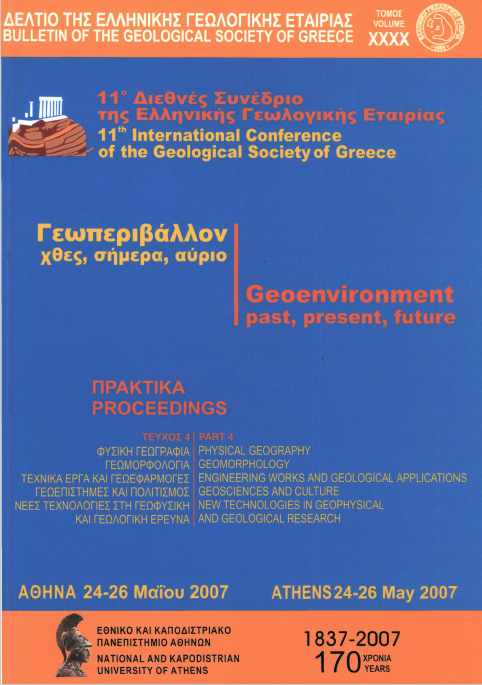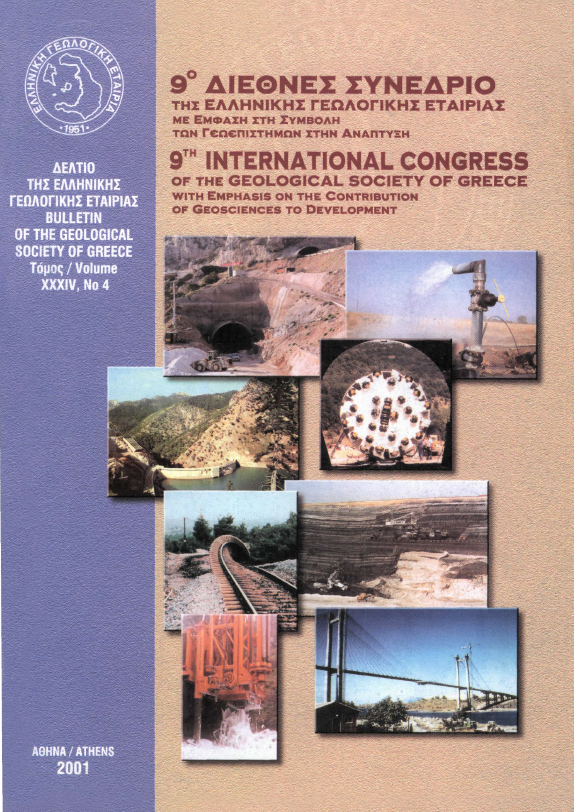Elecrical Tomography and VLF methods contribution to underground wastewater pipe construction
Abstract
In the area of municipality ofKropia (Attica, Athens) the construction of a tunnel for the transportation of treated wastewater has been decided. The length of the tunnel is approximately 1400 m and it is designed to cross an area at a depth of maximum 100 meters. Geological and tectonic mapping showed the existence of limestone and fault systems zones that are crossing the geological formations. Thus, geophysical survey has been designed in order to provide information about the geological and tectonic status at the proposed area. The application of electrical tomography has been designed in addition with VLF electromagnetic method. The first one was expected to show the geological cross section at the axis designed while the VLF method could provide more detailed information about the fault structures zones at the area. Results of the geophysical survey showed lateral changes of the mechanical behavior of the limestone. In parallel, fault zones that are crossing the axis have been mapped. Considering that engineers need to know the nature of probable problems that they have to deal with, geophysical investigation can provide useful information in a low cost and quick application and contribute to the best decision as concern the final positioning of the tunnel and the penetrating method.
Article Details
- How to Cite
-
Vargemezis, G., Gerolymatos, E., & Aggelopoulos, A. (2007). Elecrical Tomography and VLF methods contribution to underground wastewater pipe construction. Bulletin of the Geological Society of Greece, 40(4), 1749–1758. https://doi.org/10.12681/bgsg.17112
- Section
- Engineering Works and Geological Applications

This work is licensed under a Creative Commons Attribution-NonCommercial 4.0 International License.
Authors who publish with this journal agree to the following terms:
Authors retain copyright and grant the journal right of first publication with the work simultaneously licensed under a Creative Commons Attribution Non-Commercial License that allows others to share the work with an acknowledgement of the work's authorship and initial publication in this journal.
Authors are able to enter into separate, additional contractual arrangements for the non-exclusive distribution of the journal's published version of the work (e.g. post it to an institutional repository or publish it in a book), with an acknowledgement of its initial publication in this journal. Authors are permitted and encouraged to post their work online (preferably in institutional repositories or on their website) prior to and during the submission process, as it can lead to productive exchanges, as well as earlier and greater citation of published work.











